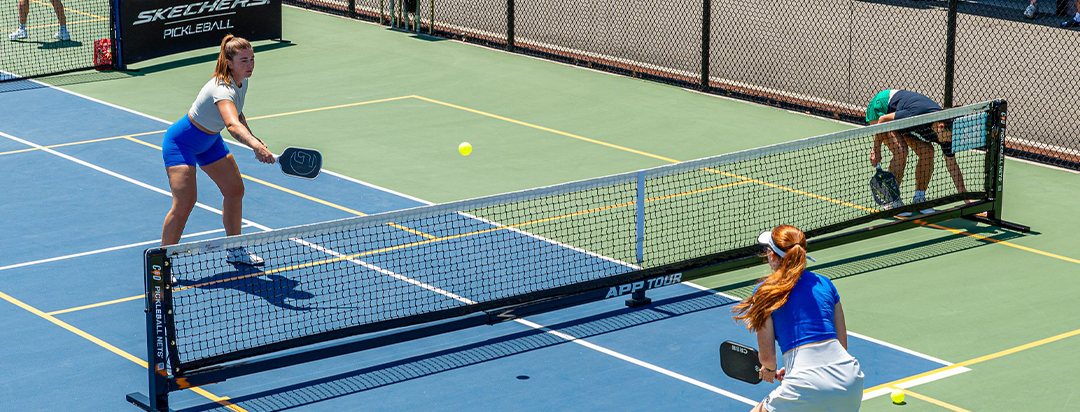

Lorem ipsum dolor sit amet, consectetur adipiscing elit ut liqua purus sit amet luctus venenatis, lectus magna.

In pickleball, not every winning shot is about speed or power. Some of the most decisive plays come from control, placement, and consistency. The dink is a perfect example—quiet in appearance but central to how the game is played at higher levels. While it might seem like a simple soft shot over the net, the dink plays a key role in point construction, patience, and pressure.
A dink is a soft, low shot hit from just behind the non-volley zone (often referred to as "the kitchen") that arcs gently over the net and lands in your opponent’s kitchen area. Unlike fast drives or hard volleys, the goal with a dink isn’t to overwhelm—it's to control.
Executed properly, the dink stays low and unattackable, making it difficult for your opponent to return with power or precision. It’s a shot built for neutralizing momentum, not creating it. But when used effectively, dinks can do both.
The dink is typically played when both teams are near the net, exchanging soft shots back and forth as they try to force a mistake, create a pop-up, or open up angles.
At its core, the dink is about forcing your opponent to make decisions under pressure—without giving them anything easy to attack. A well-placed dink can push your opponent wide, pull them out of position, or coax them into hitting the ball too high. It resets the rally, slows down tempo, and creates space for your next move.
In doubles, this shot is a foundation of net play. Extended dink rallies are common at higher levels because both teams are waiting for the other to misplace a shot or break the pattern. The first player to lift the ball too high often loses the point.
While it looks simple, consistent dinking requires timing, awareness, and patience. And that’s exactly why it’s so effective.
Though it doesn’t demand much power, the dink requires solid mechanics. Players should strike the ball with a compact swing, keeping the paddle open and the motion controlled.
A few key technical details:
The most reliable dinks are simple, repeatable, and consistent—not flashy. The goal is to keep your opponent in the kitchen, neutral, and unable to transition to offense.
The dink becomes especially important when all four players are up at the net in doubles play. At this range, hard shots become risky due to shorter reaction time, and dinks take center stage as the preferred way to extend rallies, build pressure, and exploit openings.
Players may engage in several consecutive dink shots, maneuvering the ball from sideline to sideline or hitting with varied height and spin. Each dink is an opportunity to test your opponent’s patience and discipline.
Eventually, one of two things happens:
That moment is what experienced players wait for.
The dink is not the same as a drop shot, though they are sometimes confused. A drop shot is typically hit from near the baseline and aims to land softly in the kitchen, allowing the player to move forward. A dink, in contrast, is hit from the kitchen line and is part of an extended net exchange.
Both are soft shots, but their purpose and positioning are different. The dink is about maintaining a low-pressure, high-control rally at the net. The drop shot is often used to transition from defense to offense.
Many new players either avoid dinking altogether or overcomplicate it. A few common errors include:
The dink rewards calm, stable play and a commitment to long-term gain rather than quick points.
In recent years, as paddles and athleticism have improved, the game has gotten faster. But even with that increased pace, the dink remains a cornerstone of high-level strategy.
Professional and experienced amateur players still rely on dinks to navigate through net battles, especially in doubles, where aggressive plays are riskier. The ability to slow down a point and take control of rhythm separates opportunistic players from consistent winners.
The dink isn’t an advanced trick shot or a beginner fallback—it’s a deliberate and essential part of pickleball. It keeps rallies alive, draws errors, and builds pressure with subtlety. If you're looking to improve your overall game, your dink is one of the first places to focus.
A player with a reliable dink can hold the line, dictate tempo, and wait patiently for the right moment to attack. And in a game where control is often more valuable than power, that’s an edge worth having.


Explore our collection of 200+ Premium Webflow Templates